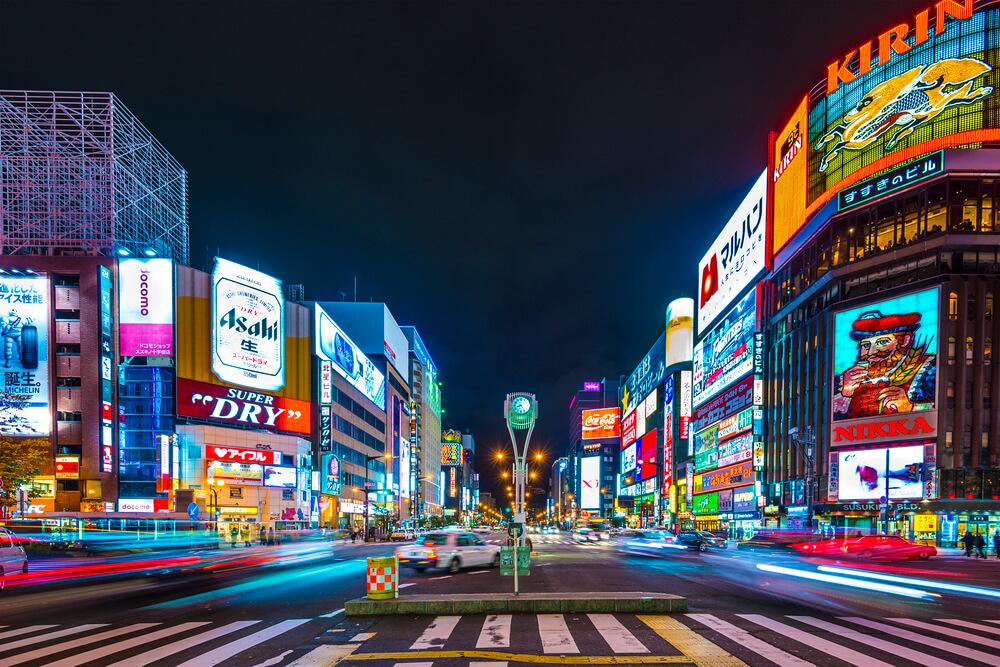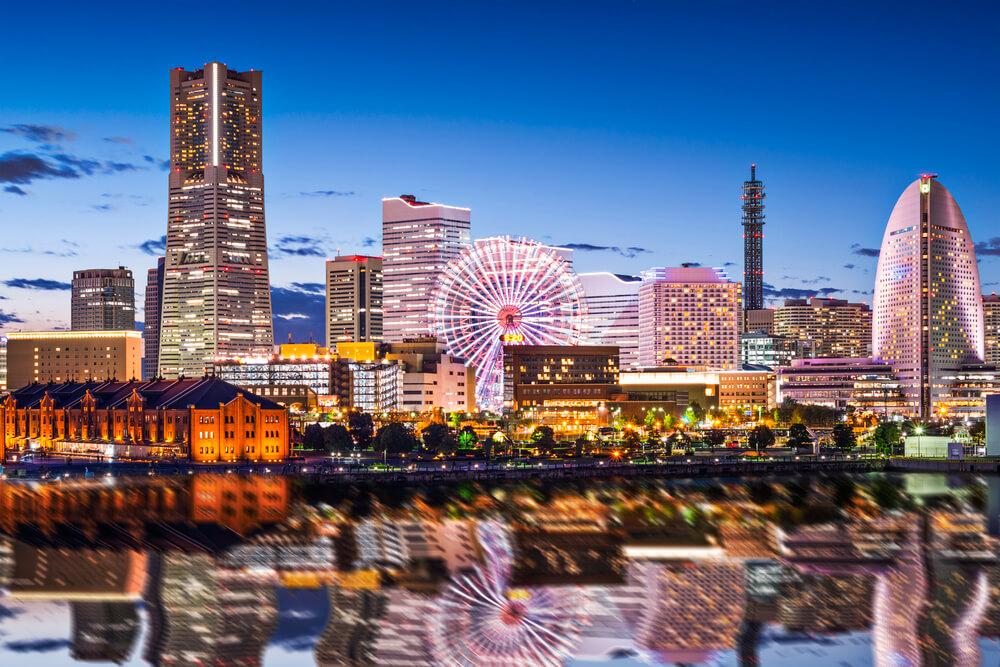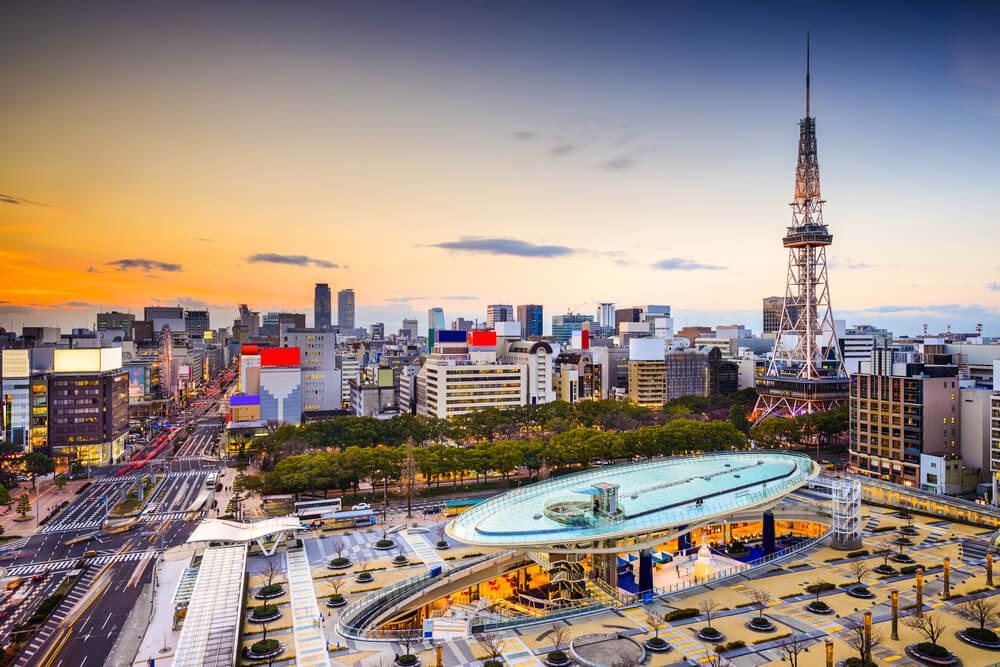The country is a contrast where the new and the old coexist, with Tokyo being the capital of Japan. Cities in Japan make it simple to observe this. The ancient Buddhist and Shinto temples, cutting-edge skyscrapers, and culinary delights that Japan offers may keep you busy for years, and there is still more to see.
Here is our guide to the top cities in Japan, which range from the bustling centers of popular attractions like Tokyo to the lesser-known locales that travelers frequently overlook.
Tokyo – Capital of Japan

The capital of Japan is where most tourists to Japan land first. Even if you’re traveling somewhere, Tokyo is worth exploring and enjoying.
Amid steel and glass buildings, visit the Electric Town (Akihabara) region to satisfy your technological or geeky craving. Then proceed to a historic Buddhist or Shinto shrine, like Tokyo’s oldest temple, Senso-ji Shrine. Another striking pair worth visiting is the Imperial Palace and the Museum of Modern Art, which are adjacent.
For strange tourist attractions, Tokyo is the place to go. Visit the Kite Museum, the Studio Ghibli Museum of animated films, the gruesome Parasitological Museum, or play video games at the GiGo Sega Building. It has six levels of everything, from the earliest arcade games to virtual reality experiences, making it one of the giant arcades in the world.
Viewing cherry blossoms (Sakura) is one of the top things to do in Tokyo and a centuries-old tradition in Japan. People go to parks during the spring for approximately a week to witness the trees blossom in striking pink hues, with petals dropping and floating like snowflakes.
Sapporo

Sapporo, located in Hokkaido Prefecture, is the fifth-largest Japanese city and the country’s most northerly major metropolis. People who prefer the winter season should visit because of the frigid climate.
The city is the location of the well-known Sapporo Snow Festival; an occasion celebrated in February that attracts around 2 million visitors a year and features a variety of magnificent ice and snow creations!
Athletes can take in the legacy of the 1972 Winter Olympics at the Sapporo Winter Sports Museum or hit the slopes at one of the ski areas close to Sapporo. Of course, the exquisite seafood cuisine of Sapporo, renowned across Japan, should not be missed!
Yokohama

On the picturesque western shore of Tokyo Bay, Yokohama is located south of Tokyo – the capital of Japan. It is well-known for being the first port in Japan to open formally to international trade in 1859. It is fair to argue that foreign influences have influenced Yokohama’s personality, from the city’s distinctive brick architecture to the renowned Chinatown that Chinese immigrants in the 1800s established.
Visitors visiting Yokohama can enjoy a variety of museums and retail options, as well as a picturesque harbor view from a waterbus or the famed Ferris wheel.
Osaka

In terms of Japanese cities, Osaka resembles a tiny village. After being extensively bombed during World War II, it was swiftly and sometimes hastily rebuilt; therefore, it doesn’t have as many historical sites as other cities.
However, you will receive enough almost rural Japanese charm, some of the best Japanese street food, and some most relaxed vintage clothing and electronics shopping at lower rates than in Tokyo (the capital of Japan).
The Open-Air Museum of Old Japanese Farmhouses and Bunraku theatre, where you can see traditional Japanese puppetry, are two places in Osaka that you shouldn’t miss. Another exciting location is Osaka Castle, which you may explore or view from the sea by boarding a Gozabune boat.
There are also a lot of onsens (hot baths) in Osaka, which, although feeling like spas, offer a distinctive cultural experience worth exploring.
Nagoya

In addition to being a technology hub with a burgeoning robotics sector, Nagoya has long served as the core of Japan’s automobile and aircraft production. Visit the SCMaglev, Railway Park, the Nagoya City Science Museum, or one of the two Toyota museums to learn more about Nagoya’s technological side. Nagoya has recently been well-known worldwide for hosting the World Cosplay Summit, where participants from 20 countries contest in the World Costume Championship and participate in one of Japan’s most spectacular cosplay parades.
Hiroshima

The history of Hiroshima may be the biggest draw for tourists, but it shouldn’t be the only one. To comprehend the city’s past, you must visit Hiroshima Peace Memorial Park, which provides information about Hiroshima’s atomic bombing during World War II, and the Atomic Bomb Dome’s skeletal remains nearby.
The feudal Hiroshima Castle, completely decked in beautiful wood and black lacquer, is also located in the center of Hiroshima. The castle is well-known for its monthly Samurai performances that take place immediately outside the castle gates and is home to a shrine and a museum dedicated to samurai.
One of the top tourist destinations in Hiroshima for auto enthusiasts is the local Mazda Museum. The Hiroshima-style okonomiyaki, a sort of pancake stuffed with noodles, cabbage, bean sprouts, and a fried egg, should also be tried by tourists.
Miyajima Island, which is reachable from Hiroshima through a lovely ferry ride, is a fantastic day excursion. Visitors come to this area to see Itsukushima Shrine and the well-known “floating” torii gate, which appears to float on the azure waters during high tide. However, it is possible to approach the gate on foot during low tide.
Kyoto

Kyoto served as the nation’s capital for more than a millennium and is still among the most attractive places to see the traditional culture of Japan. Almost 2,000 temples and shrines may be found in the city, which includes the “Golden Pavilion,” Ryoanji, famous for its zen rock garden. Moreover, Fushimi Inari Taisha is also the most visited shrine with a tunnel of 5,000 golden torii gates.
Gion’s “geisha district” is one of Kyoto’s most famous neighborhoods. Although geiko and maiko are notorious for being mysterious, if you’re lucky, you might run into a stunning woman wearing kimonos while walking!
The Kyoto National Museum, home to over 230 Important Cultural Properties and recognized National Treasures, is a must-visit destination for art and history enthusiasts.
Nara

Nara can be reached from Kyoto in under an hour by high-speed train, making it a simple day excursion. However, spend at least one night there if you want to discover this remarkable small city.
The most famous attraction in Nara is Nara Park, where more than a thousand kind, inquisitive deer roam freely and frequently get very close to people. Due to their National Treasure status, park visitors are not permitted to annoy or harm the deer.
After spending some time surrounded by cute animals, visit Tdai-Ji Temple, a UNESCO World Heritage Site built in 752 CE. With a height of 15 meters, the shrine is home to Japan’s giant bronze Buddha statue. The Tdai-ji Museum, which lies close to the gate leading into the temple grounds, is home to a sizable collection of Buddhist artwork.
You can walk along a road decorated with lanterns to get to the 8th-century Kasuga Taisha, another temple worth visiting.
If you feel like working out, you may hike 343 meters to Mount Wakakusa’s summit, the best place in the city to see Sakura in the spring.
Enjoy some street food, which in Nara is typically something sweet, to cap off the day. Yomogi mochi, a warm cake baked of sticky rice and filled with sweet red bean paste, is this city’s most well-known street food item.
Kobe

A port city located 30 kilometers west of Osaka is Kobe. It was among the first cities that opened to foreign trade after abandoning Japan’s policy of isolation, much like Yokohama. Kobe beef from this region has earned the term “Kobe” worldwide renown. The name of the specialty is supposed to have inspired basketball legend, Kobe Bryant!
Arima Onsen, one of Japan’s oldest hot springs, and Mount Rokko, a famous hiking destination, are located close to the city. The Nada district’s famed sake brewers, which are one of the best in Japan, are another appeal. Another location affected by the Great Hanshin Earthquake in 1995 was Kobe. Since then, the city has been completely rebuilt, and the Kobe Earthquake Memorial Museum honors the incident.
Okinawa

It made sense to incorporate the entire Okinawa Prefecture because of its distinctive terrain. With 160 islands, Okinawa is the most southern prefecture in Japan. It is renowned for having a subtropical environment that supports many endangered plant and animal species. Okinawa is the ideal destination for anyone who wants to go swimming, snorkeling, or scuba diving while still experiencing Japan because of its white sand beaches and clear, blue waters filled with colorful species. This group of islands, also known by the previous name Ryukyu, has a distinct culture incorporated into the traditional Japanese culture that is more frequently shown.




